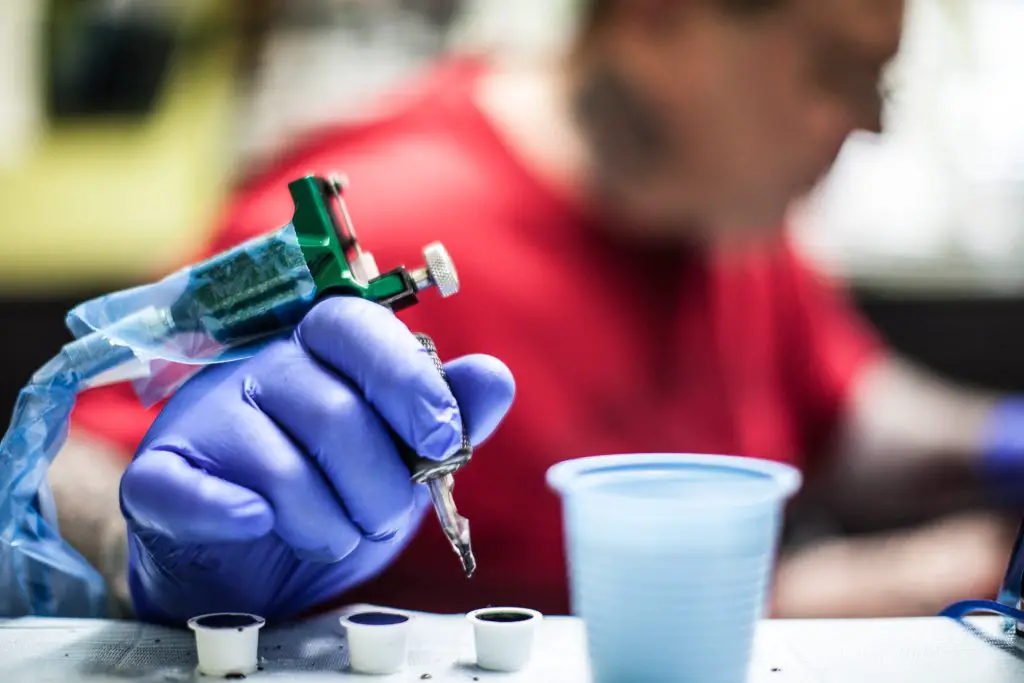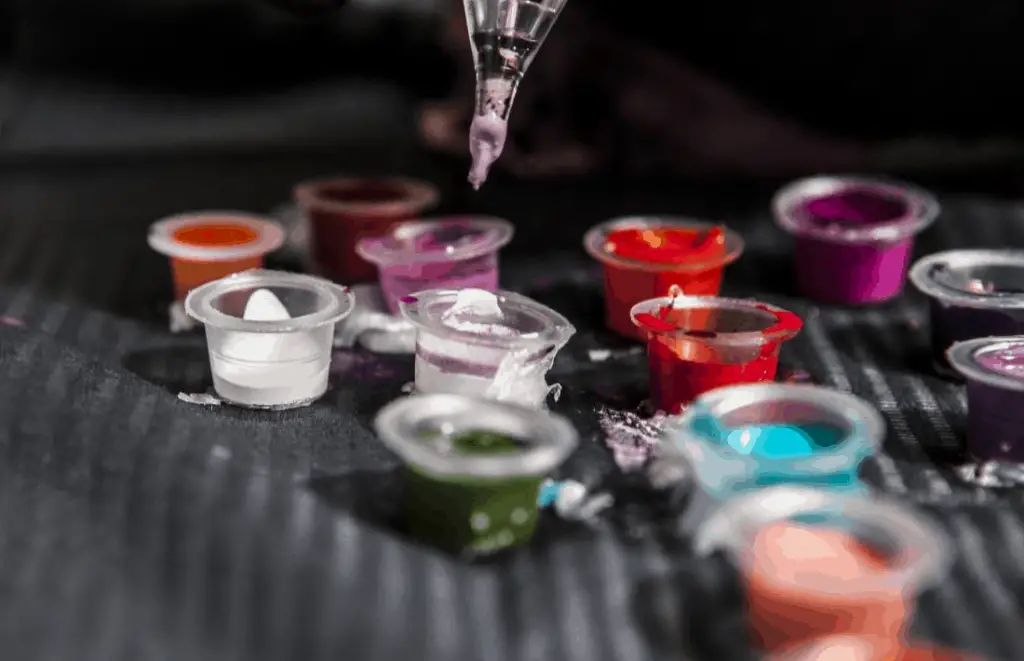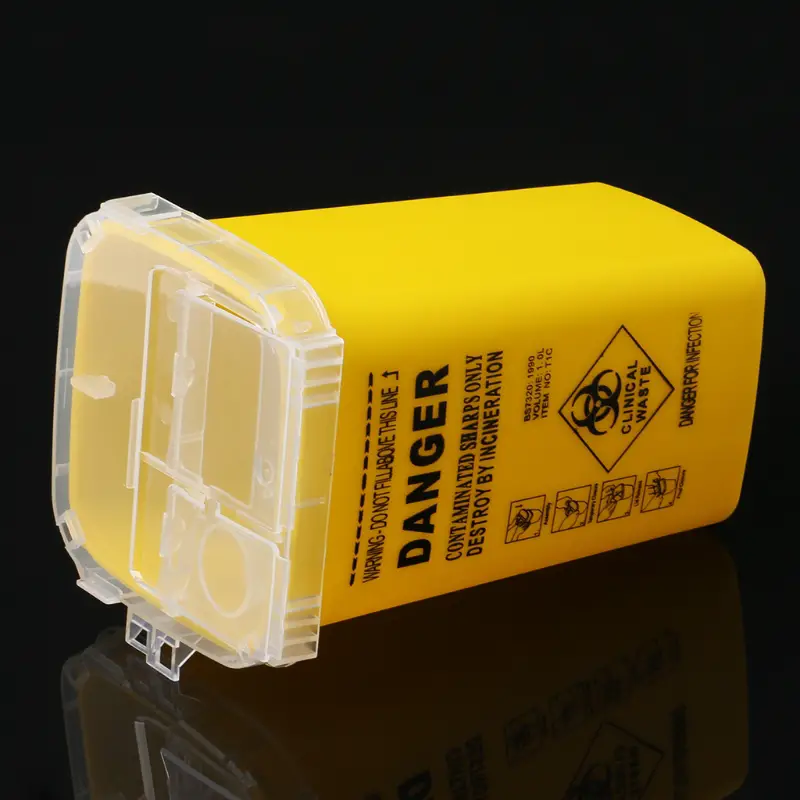So, you’re thinking about starting your own tattoo business, huh? There’s plenty to think about. But worry not, we’re here to make things easier by talking you through the top 10 tattoo supplies every artist needs.
Once stepping into the tattoo industry, besides having ample skills and knowledge, a tattoo artist needs to shell out on the necessary tools and equipment, all of which will streamline your job and ensure the hygiene and safety of you, your crew, and your clients.
Without further ado, let’s dive right in!

Tattoo Supply List For You To Get Started
1. Tattoo Chair and Bed
First and foremost, you’ll need a special chair and bed for your clients. Tattoo chairs and beds are often padded to ensure ultimate comfort during the hours-long tattooing process, which also helps to relieve pain.
Bear in mind that cheap doesn’t necessarily mean good. Opting for cheap furniture, especially for your tattoo parlour can tire you out much faster and it can cause serious back, arm, and leg pain. Be willing to make the necessary investment and choose a quality piece of furniture that’s comfortable, ergonomic, and easily adjustable.
Tattoo Beds for Clients:
Dream In Reality Electric Tattoo Bed

This model from Dream In Reality gives you the option of making necessary adjustments with a remote or foot pedals. You can make use of its electronic controls to adjust the chair’s height and backrest angle from an upright seated position to completely horizontal—making it both a chair and a bed at the same time. With the variety of height adjustments available, you’re able to raise your customers to an ergonomically desirable position. Although manual adjustment is required, the armrests and leg rest are also adjustable. That’s a minor kink in the works, but it shouldn’t be too much of a concern. Other features include detachable armrests, a headrest with a cutout, and a filler pillow that matches.
Chairs for Tattoo Artists:
Cadiatio Saddle Stool Rolling Chair

Aside from the wellbeing of your clients, it’s crucial that you, as a tattoo artist, put your comfort first. This saddle stool rolling chair from Cadiario features an ergonomic design with an adjustable seat and backrest to support and relieve stress or pain on the back, shoulder, neck, legs, and hips. The seat cushion can be freely rotated, and the chair’s smooth caster wheels enable a 360-degree movement. The height can also be adjusted from 22.13 to 29.93 inches. We appreciate that it can be easily assembled without requiring other equipment and is specifically made for usage in tattoo studios, barbershops, clinics, and more.
2. Tattoo Sanitation Supplies

Look for a complete sanitary kit including cotton, bandages, and gauze. This is essential as you’ll be performing many procedures that involve wiping ink, applying anesthetics, both of which require the use of sterile bandages.
Cotton bandages are usually packed in a 10-gram plastic bag or paper pack. Keep in mind that you’re not placing the cotton directly on the wound but only wrapping it around the treated area to ease pain and bleeding. The cotton layer must be evenly white, dust-resistant, and free of inorganic impurities. Double check with the seller to make sure they’re not filled with bad cotton (waste cotton or rags) which can be a breeding ground for bacteria.
Alternatively, you can opt for an absorbent cotton pad, which is capable of absorbing water and liquid very well. It makes the perfect option for applying antiseptic or anesthetic solutions on the skin’s surface.
In the case of gauze, you can use medicinal gauze like phenolic acid gauze, boric acid, ointment, and sulfamide gauze.
3. Tattoo Machine

The two most commonly used tattooing machines are rotary tattoo pen machines and coil tattoo machines.
Rotary tattoo machines feature a rotor section that controls the sticking bar for the tattoo needle. It then moves alternately and turns into linear motion on the needle bar. When purchasing this type of tattoo machine, pay attention to the wire core and housing. The core creates a magnetic field that vibrates the reed to push the needle up and down. Generally, there exist different types of coils: 8, 10, and 12.
Coil tattoo machines, on the other hand, involve the action of electric current flowing through the coils to create an electromagnetic field that quickly closes the circuit. This type of machine uses a principle whereby the reinforcement bar (with the tattoo needle attached) periodically pricks the skin.
4. Tattoo Ink

Fun fact: most tattoo inks aren’t actually inks. Rather, they contain pigments that are suspended in a carrier solution. Contrary to popular belief, pigments usually aren’t vegetable dyes. These pigments are mainly composed of chemicals, such as alkali metals that make up the color of the tattoo. In rare occasions, some inks contains plastics or plant dyes.
The purpose of the carrier is to make sure that the pigment is evenly distributed in the liquid and prevent the growth of pathogens. Otherwise, the pigments are susceptible to accumulation and will not be as evenly dispersed when tattooed on the skin surface.
The safest carrier ingredients are ethanol, pure water, witch hazel, listerine, propylene glycol, and glycerin. The harmful ones, however, include methanol, anticoagulant, and formaldehyde.
Please refrain from buying low-quality inks from unknown sources as they may contain harmful substances, leading to serious infections and life-threatening complications.
5. Needles and Autoclave

One of the most integral objects from a tattoo supplies checklist you mustn’t leave out is the needles. Today, many needles are integrated with tattoo ink, meaning they’re “hidden” in the cluster’s slots of the needles. When pricking the skin at a frequency of 50 to 3,000 times/minute, you’re basically pushing the ink deeper into the dermis, where collagen fibers, nerves, and blood vessels are at.
There are six types of tattoo needles on the market, including RL needle, RS needle, needle F, needle M1, needle M2, and RM needle. You should always select your needle based on the type of tattoo machine you have.
Since needles are penetrated deeply into each client’s skin, you have all the more reason to prioritize disinfection and nurture a sterile environment.
We highly recommend getting an autoclave, which is known to eliminate even the spores of all bacteria. The principle of this machine is to combine high heat with pressure. The temperature is typically maintained at 121 degrees 249.8 degrees Fahrenheit for about 5 to 15 minutes, therefore killing the bacteria lingering on the tattoo needles.
6. Antiseptic

Each time a needle pricks the skin, a wound is created, prompting the body’s natural healing response. This is the process that’s making tattoos permanent. However, when a client’s body is unable to handle the damage, it might lead to serious infections which call for an antiseptic drug.
In this case, we recommend Betadine. It contains iodine; povidone more specifically, to treat wounds or infection caused by needles.
7. Drugs for Anesthetic
Not everyone can stand the pain of getting a tattoo done, so as an artist, it’s crucial to prepare an anesthetic. It creates a temporary sensation loss on all fibers of the central nervous system and phytoplankton, big and small. During this time, your clients’ won’t experience pain, cold, heat, shallow or deep touch. When the medication runs out, the effect reverses.
However, it’s extremely important to consult a professional healthcare provider before applying such drugs on your clients because they must be used at a recommended dosage, plus the duration of anethesia need to be precisely calculated. Otherwise, overdosing your clients will cause them to experience anaphylaxis seizures and even death. And at the same time, you don’t want to underdose them and put them through so much pain. Therefore, always consult first!
8. Tattoo Scanner and a Computer

A tattoo scanner is used to capture and transfer physical images from prints of text, documents, and posters. The prints are then fed through flat panels, which can be scanned in black and white. Oftentimes, a tattoo scanner is equipped with an accompanying software, like Adobe’s Photoshop where you can resize and edit the image.
We always recommend defining your work in graphic form, whether it be live render (edited design on the computer screen) or finished render (printed design for client’s presentation) before going straight into the tattooing process.
9. Disposal Bin

You will be throwing away at least one needle after each client, and bear in mind, they’re all bloody. On top of that, cotton, bandages, gauze, and scissors are also hazardous wastes that need to be properly disposed of.
Blood-stained wastes are contaminated and are regarded as amongst the most dangerous types of waste. Therefore, they need to be handled optimally.
10. Lighting System

Without a light, there’s nothing you can do. In the case of a tattoo artist, always opt for a standing lamp with high-powered bulbs. We highly recommend getting one with height adjustment so you can control it to your liking. Moreover, choose only white light because it allows you to see the purest of color from the tattoo ink, making it easy for you to do the necessary adjustments.
Wrapping Things Up
Skills and knowledge aside, a tattoo artist is responsible for preparing a full range of supplies that will help facilitate the tattooing process.
The tools from our tattoo supplies checklist can also help minimize any potential complication which may occur during the process. Besides, having a full set of tools also allows you to handle unexpected situations which may transpire. You can never predict what is going to happen.
Remember, the right amount of expertise needs to align with complete supplies and equipment in order to create masterpieces. Look around and compare the prices. But never settle for low quality.

Celine So
Be mindful of your words as they are impactful, which also explains why I am so fond of writing.


